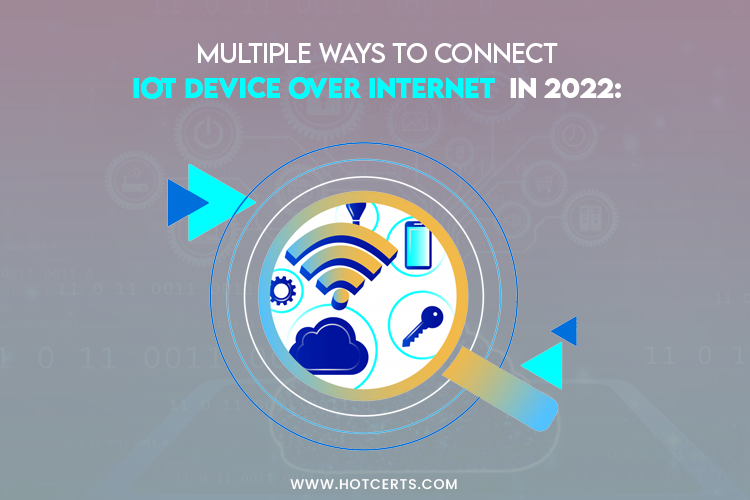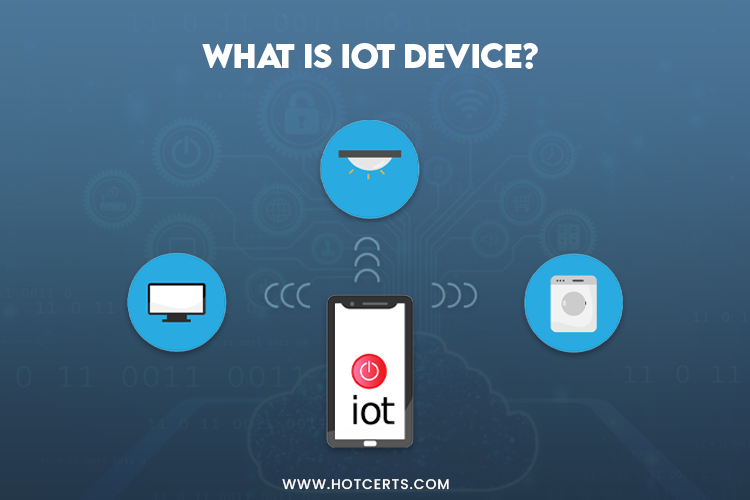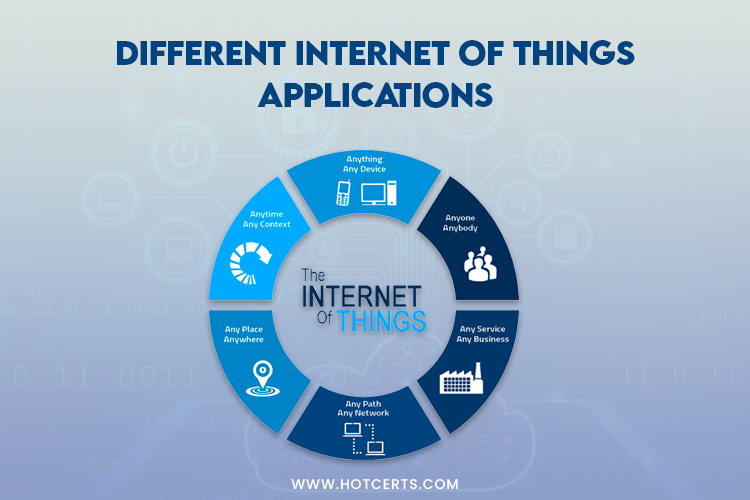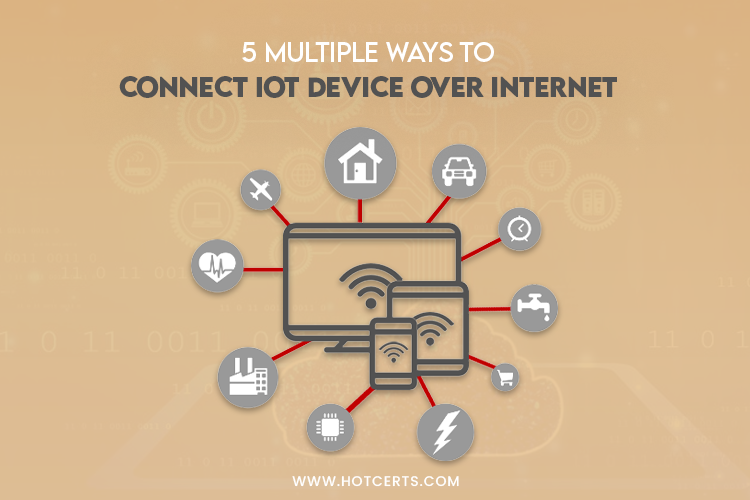Ways to Connect IoT Device Over Internet
Choosing the perfect option to connect your IoT device over internet is not complicated as it seems. While there are a bunch of varieties of possibilities, moreover, sometimes your main projects may shift connection type as they already move from the proof of different concepts using early trials and also into managed production. IoT devices have become more important these days. The industrial internet of things is vital in connecting multiple devices through different connection types.
In this article, we will discuss multiple ways to connect IoT device over internet. There are some easy ways from which you can effortlessly apply IoT devices over internet.
What is IoT Device?
IoT devices are non-constant computing devices that can connect to a network wirelessly and transmit data, such as the many devices connected to the internet of things (IoT). The industrial internet of things plays a vital role in configuring IoT device over internet.
The Internet of Things (IoT) extends connectivity beyond standard devices such as desktops, notebook computers, smartphones, and tablets to any customarily “dumb” or non-internet-enabled everyday objects and physical devices. These devices, embedded with technology, can connect and communicate via the internet. They can also be organized and monitored remotely. Many internet of things devices connects through different sources like Ethernet, modem, etc.
Different Internet of Things Applications
Here is the list of the different top internet of things applications you must know about:
Agriculture
IoT makes monitoring and controlling microclimate conditions possible for indoor planting, increasing production. For outdoor planting, IoT-enabled devices can detect soil moisture and nutrients and better control smart irrigation systems in conjunction with weather information. If sprinklers, for example, only dispense liquid when needed, a valuable resource is not wasted.
Healthcare
To begin with, wearable IoT devices allow hospitals to monitor their own patients’ health at residence, reducing hospital visits while still providing accurate info that could save lives. Smart beds in health facilities keep employees informed of availability, reducing wait time for available space. Installing IoT sensors for fault detection reduce breakdowns and increases reliability, which can mean life or death and death. Internet of things devices are the best in the healthcare field.
Insurance
The Internet of Things revolution has the potential to benefit the insurance market as well. Insurance carriers can provide policyholders with discounts on IoT wearables like Fitbit. By utilizing fitness tracking, the insurance company can offer customized policies and inspire healthier habits, which benefits everybody, insurer, and consumer alike, in the long run. Insurance is one of the best internet of things applications worldwide.
Transportation
Most individuals have heard about the advancements being made to self-driving cars by this point. However, this is only a tiny portion of the enormous potential of transportation. The GPS, another instance of IoT, is being used to assist transport companies in plotting faster and more effective routes for tractor-trailers hauling freight, thereby shortening delivery times. It is the best for the industrial internet of things.
Wearables
Wearables serve several functions, from medical to athletic ability to GPS tracking. In the last three years, IoT devices have more than doubled.
The fitness bands track calorie expenditure, distance traveled heartbeats per minute, blood oxygen concentration, and other parameters. These IoT devices are primarily wristbands/watches. They can, however, take the form of earbuds, clip-on devices, or shrewd fabric.
What is Internet of Everything?
The Internet of Everything (IoE) notion expands on the Internet of Things (IoT) prominence on M2M (Machine-to-Machine) correspondence to describe a more complicated system that includes people and processes.
Cisco developed the concept of the Internet of Everything, which they define as “the smart connection of people, processes, data, and things.” Even though all communications in the Internet of Things are between machines, IoT and M2M are sometimes used interchangeably. Aside from M2M communications, the broader IoE concept includes machine-to-people (M2P) and innovation people-to-people (P2P) interactions.
5 Multiple Ways to Connect IoT Device Over Internet
Here are the perfect ways from which you can run IoT device over internet
Ethernet
Ethernet is a great bonding experience for IoT devices because you need a hard-liner, unbroken link to your device, and critically have the necessary infrastructure to hook gadgets up, or you’re taking the first steps to help bring up a new IoT solution. It’s simple to implement, well comprehended, cheap, simple to commission, and has high bandwidth. Because data transmitted over Ethernet is insecure, your data and device management actions are vulnerable to attack from every piece of equipment on the same network except if you take specific measures to encrypt your messages. It is best to implement IoT device over internet.
Wi-Fi
Again, simple to implement and comprehend. Wi-Fi extends the Ethernet points mentioned above, which trade hard-liner reliability for the versatility of installing your device where needed without having to route cables to a network switch. Data is typically encrypted from your device to the Wi-Fi access point. Still, it is sent in clear text over the access point’s internet connection, except if you add your own IoT system-encrypted communications. Consider the implementation of credentials needed to connect equipment to the Wi-Fi network when pairing your IoT devices with Wi-Fi.
Cellular
Instead of relying on on-site connectivity managers, cellular connectivity via mobile phone networks provides a very different approach to IoT technology because it uses existing massive infrastructure and places a much higher level of control and managerial staff directly at the fingertips of the IoT system operator.
Bluetooth
A popular option for low-power connected devices is battery-powered wearable technology with a limited connection period only when the device is in use. The range is typically limited to 3-5m, necessitating a secondary device to bridge the data to an internet connection. Bluetooth is frequently bridged via mobile phones, but dedicated portals are also popular in repaired applications such as domestic health monitoring.
LPWAN Managed Network
Local self-managed IoT wireless communication can be an excellent solution when you need to deploy mobile technologies with your access points and portals in areas with no current infrastructure or whenever you want a self-managed, entirely secluded infrastructure. In contrast to Wi-Fi network connections, which place high power demands on connected devices, IoT-concentrated LPWAN network options are designed to run at lower bandwidths, attract less power, and operate in a fault-tolerant manner using re-routed mesh network topologies. Lora WAN and, more recently, Wi-SUN solutions provide long-distance connections between gateways and devices, with the gateway serving as both a dimensional Analysis function and an overpass to the device.
Conclusion
Undoubtedly, connecting IoT device over internet is the best way to conclude your connection using multiple methods. Internet of Things applications are the best appropriate resources. Above are the best ways to connect IoT devices over internet. Comment below if you have queries related to internet of things devices or internet of everything. Our Professional team will assist you accordingly!




